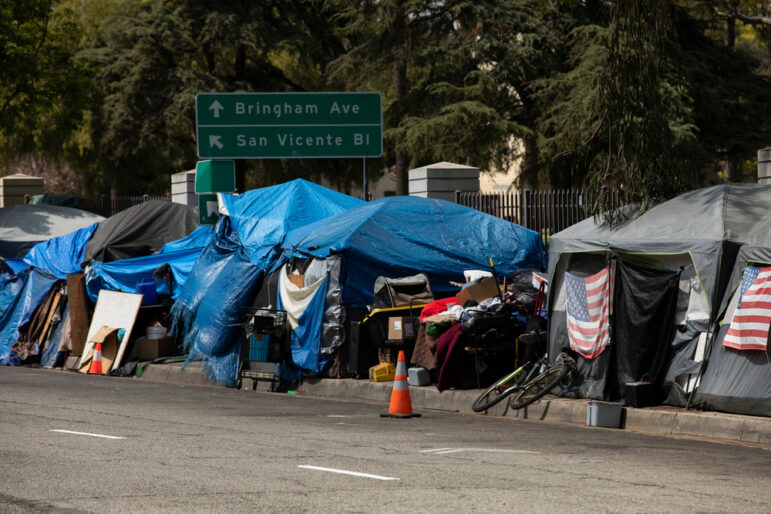
10 Questions
Investigating Clandestine Gold Mines, Deforestation, and Corporate Misconduct: The Reporter Who Made the Amazon His Beat
Brazilian freelance reporter Hyury Potter recently won the Pulitzer Center’s Breakthrough Journalism Award.

Brazilian freelance reporter Hyury Potter recently won the Pulitzer Center’s Breakthrough Journalism Award.

Two scientists and an editor spent six months investigating so-called paper mills, which churn out bogus scientific papers that impede actual research on lifesaving breakthroughs.

The team at the award-winning data journalism outlet suspected that Russia would invade — they could see clues in the data. We profile the team and their work combating false conflict narratives.

At NICAR25, data reporters detailed how amateur transportation enthusiasts are a valuable, media-friendly, and underused source of critical tips and information for investigations.

As extremism spreads across sub-Saharan Africa, journalists are turning to open source tools to track the networks and physical movement of these often violent groups.

Our column also features stories on the history of African borders, Spain’s prisoner release algorithm, and the global impact of USAID funding cuts.

GIJN shares some of the no-cost, easy-to-use data tools that NICAR25 conference panelists described as surprisingly useful but unknown by investigative reporters.

Covering Trump 2.0 poses stark challenges for news outlets, but many environmental journalists who reported on Trump between 2016 and 2020 can offer perspective.

TBIJ journalists explain how they got around SLAPP suits by having UK Members of Parliament — shielded by legal privilege — read in the House of Commons previously silenced stories.

The current funding challenges facing nonprofit media make it more important than ever for newsrooms to “walk the talk” on transparency and to maximize their independence.

For International Women’s Day we spoke to data journalists from Argentina, Kenya, Sweden, and Turkey to find out why they chose this path and what challenges still remain.

Ginna Morelo put part of her investigation into Colombian paramilitaries on hold for 13 years to protect her family and sources. She tells how she decided it was finally time to publish.

The Central American Independent Media Archive (CAIMA) seeks to preserve reporting from threatened or shuttered accountability media sites across the region.

For one night, the French nonprofit media site brought its staff and projects to a Paris theater to share its investigations into journalists who have been killed or silenced.

To help data journalists with their reporting, here is a curated list of non-government websites and archives that preserve or maintain public health data.

Journalist Shiori Ito directed the Oscar-nominated documentary ‘Black Box Diaries,’ spending years reporting on her attacker and helping to spark the #MeToo movement in Japan.

This award-winning investigation into Xinjiang internment camp survivors was nearly silenced. Here are some lessons learned about keeping vulnerable sources safe and telling their stories.

We used WhatsApp to crowdsource information from Uber and Lyft drivers in NYC about company lockouts during a local, minimum wage dispute.

Also featuring: a comparison of German political parties, the secret fleet transporting sanctioned Russian oil, and an analysis of homes that survived the Los Angeles fires.

Homelessness is at a record high, and there are many investigative stories to tell. ProPublica has compiled tips and lessons learned from its sources while pursuing its coverage.

In a career spanning more than 20 years, Le Monde reporter Stéphane Horel has brought a creative and, at times, humorous approach to groundbreaking environmental investigations.

In the aftermath of a car bombing that killed one of Malta’s leading investigative reporters, her family set up an organization to fight for justice and ensure her legacy lives on.

Across the investigative journalism community, GIJN has heard uniform voices of solidarity, and numerous creative strategies for surviving this fundraising crisis.

GIJN calls upon elected officials in the US to reverse the catastrophic action of withholding USAID funds from independent investigative newsrooms around the world.

CLIP developed a collaborative database that empowers journalists to access public documents, contracts, and datasets across Latin America.

After a tip-off about unsustainable logging, Low Choon Chyuan conducted a year-long investigation combining on-the-ground environmental reporting with QGIS and satellite imagery.

The nonprofit newsroom — whose founders and senior leadership are all women — has taken a innovative, youth-focused approach to covering corruption.

At a recent GIJN webinar, three experts explained how reporters can get regular, free access to high-quality satellite images covering almost anywhere on Earth.